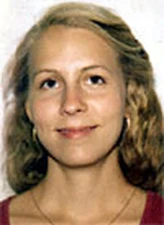Heather M. Stoll

The 2007 Outstanding Young Scientist Award is awarded to Heather M. Stoll who has tackled the difficult task of unlocking the geochemical secrets hidden in coccoliths (cacite plates produced by algae) and demonstrated their application to paleo-oceanography.
Heather Stoll has taken the seemingly insurmountable task of unlocking the geochemical secrets hidden in coccoliths ( calcite plates produced by coccolithophore algae) and of demonstrating their application to paleoceanography. Her studies provide a new tool for reconstructing past variability in ocean productivity, which is one of the primary goals of paleoceanographers, as it is closely linked to changes in atmospheric pCO2.
Geochemists using foraminifera tests have learned over the past 30 years that the application of geochemical proxies in biogenic carbonates is confounded by issues such as vital effects, species variability and analytical obstacles. As these difficulties are far greater when dealing with micron size coccoliths, only very little geochemical studies have been done so far on coccoliths. Heather’s initial work on fine sediments composed of multi-species coccoliths, suggests that the proportion of strontium incorporated in the coccoliths (Sr/Ca) might be used to study past variations in ocean productivity. To test this hypothesis she has developed a comprehensive program, which examined the oceanographic, geochemical and biological controls on coccoliths’ chemistry using samples from seafloor sediments, sediment traps and laboratory culturing experiments. Moreover, Heather developed innovative approaches to analyze mono-specific and individual coccoliths, which support her idea that the Sr/Ca ratio of coccoliths reflects the biological productivity at the surface of the ocean. Indeed, Heather has already applied this new geochemical proxy to the Paleocene-Ecocene Thermal Maximum (PETM), thus offering a new dimension to the controversy about the possible causes of this extreme warm period and the mechanisms that might have led to its termination. Heather’s studies clearly opened a new direction for paleoceanographic research and will lead others to take this road.
